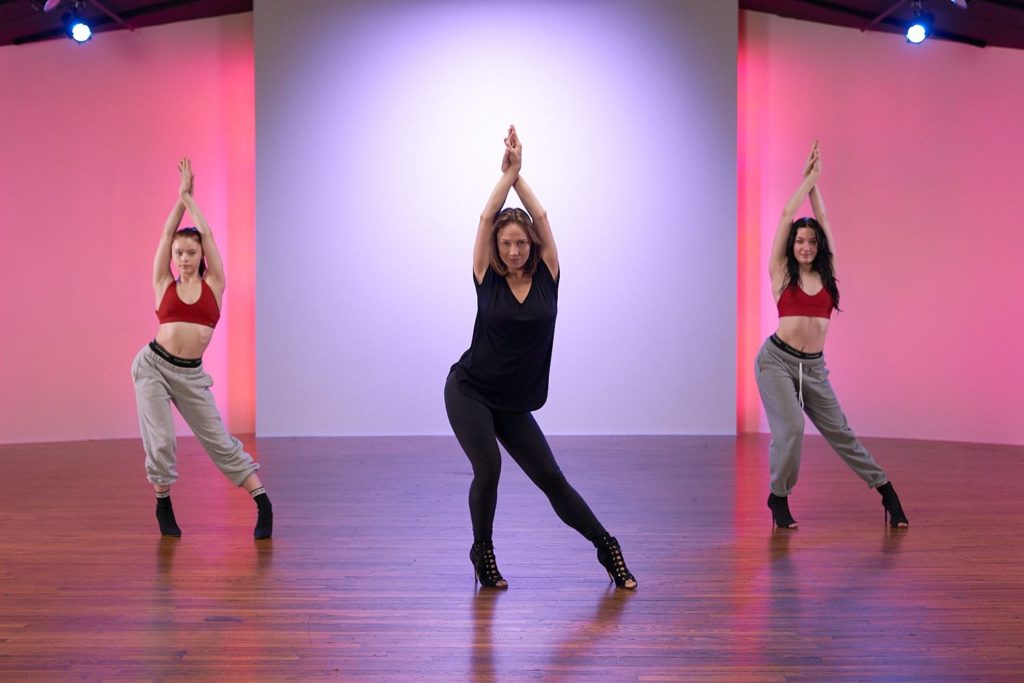A lot of dance trends have come–and gone–in the transition period marking the last decades of the 20th century and the beginning of our current era. Heels dance (sometimes called stiletto dance) is one movement that is definitely here to stay.
If you have had an interest in the various types and genres of professional dance, particularly women’s professional dance, the chances are high that you have at least heard of heels dance. But what is it exactly? Today we’ll spend a little time filling you in on this international dance phenomenon.
It’s All In The Name
This may seem a little obvious to some readers, but yes, it is called heels dance because the moves are performed in high heels. The ideal shoe is a stiletto heel, but you’ll see dancers wearing all kinds and modifying choreography appropriately. But, simply putting on a pair of pumps and cutting a rug is not the only part of heels dancing!

While heels can be seen as just another tool in the dancer’s toolkit, there is an associated style and technique attached to heels dancing, as well. Just how there are different tap techniques and histories, different physical techniques for ballet en pointe and in flat shoes, or an added character element when wearing character shoes in musical theatre class, dancing in heels has a certain flavor and history, too.
A Blend Of Traditions And Styles
What is the recipe for heels dance, and how was it developed? To understand heels dance, you have to put a lot of ingredients into the right cultural timeline, specifically the latter half of the 20th century. You take the professional expertise and clean lines of ballroom and jazz dancing, mix it with the dynamic flair of latin dances like the tango, salsa, and the mambo, and stir the mix into the heady world of go-go and showgirl dancing. And voila! You all have the classic elements of heels dance.
Although heels dance certainly takes some inspiration from the more risqué aspects of the dance entertainment world, it is a thoroughly professional discipline, and not a stand-in or shorthand replacement for burlesque dancing. It is a highly technical artform which when perfected creates a one-of-a-kind, dazzling display of passionate dancework. Think of it like figure skating: A lot of choreography, talent, and sheer technical excellence goes into every successful performance and while pure athleticism of ice skaters may be enough to wow, it is their mastery of their tools (skates!) that brings their movements to life.
Is Learning Heels Dance For Me?
Learning heels dance can be a challenge, especially since your legs and ankles have to re-coordinate movements you may have already mastered on flat, but it can be a very rewarding endeavor by those who participate. Whether you are learning heels dance online or in person, with professional aspirations or just to see what you can accomplish privately, or for personal fitness, heels dance is a true artform within the boundaries of its discipline.
For those familiar with some of the styles incorporated into it, heels dance can be a fun new way to approach familiar dance moves, as the addition of the footwear brings its own unique set of skills to learn. You can dance in heels within the dance styles of jazz, ballroom, musical theatre, and hip-hop! Dancing in heels is great for building strength, flexibility, and better posture. And for those taking heels classes recreationally, heels dance is an excellent confidence booster, as the movement looks hard to the casual viewer, but can be a thrill to master, as heels will take a casual walk and turn it into a show stopping strut!

For some, dancing in heels is their favorite way to awaken their feminine side, as many a heels class will involve hip pops, sassy walks, floorography, hairography— you name it! Other instructors will treat heels as just another shoe you can wear in any jazz, hip-hop, or theatre class. CLI instructor Liana Blackburn breaks down her take on heels in a number of classes on our website, often warming you up with ankle exercises specifically designed for heel-wearers!
Once you’ve mastered the basics of heels dance, an added benefit is the ease of your transition to another style of dance. An extreme comparison would be learning how to cartwheel on a balancing beam: Imagine how easily you could perform this move on the ground once you have mastered it on the beam. A similar relationship exists with the footwear used in heels dance. So it’s a confidence builder as well as a serious skills developer, what’s not to like about that?

